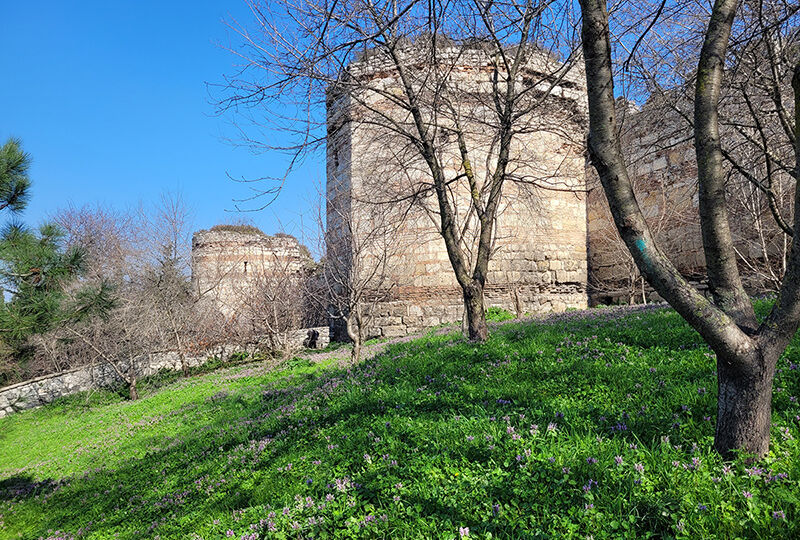
If you’re a Byzantine archaeologist or historian, you’ve got to learn about the empire’s center and its remains. To some, Byzantium was not really an empire but the overstretched “city-state of Constantinople.” This post might come in handy for future fellows who seek inspiration for planning tours and getting around in the city.
We were fortunate to check out a couple of the current digs in the city with ANAMED (Haydarpaşa, Bukoleon, Saraçhane, Zeytinburnu). It was a blast. After soaking up all that collective knowledge, we thought, “Hey, why not keep this going?” We cooked up similar adventures in Ayvansaray, Karamustafapaşa, and Vefa down the line, yet more handy for future use are certainly the following two adventures.
A Byzantine tour across Sultanahmet
The rationale of the tour
Our escapade went down in the mahalle of Sultanahmet, where we tried to soak in the vibes of the Great Palace. This was the spot where the Byzantine emperors resided and much of the higher central administration was located for around 700 years (400–1100 CE). It was like stepping back in time. We came there with a strength of 18 participants.
Itinerary
1. Meeting at 9:30 am at Alman çeşmesi/German fountain. So, picture this—we’re out there, facing rain like it’s our job. Not exactly ideal for sightseeing, but hey, we’re hardcore explorers.
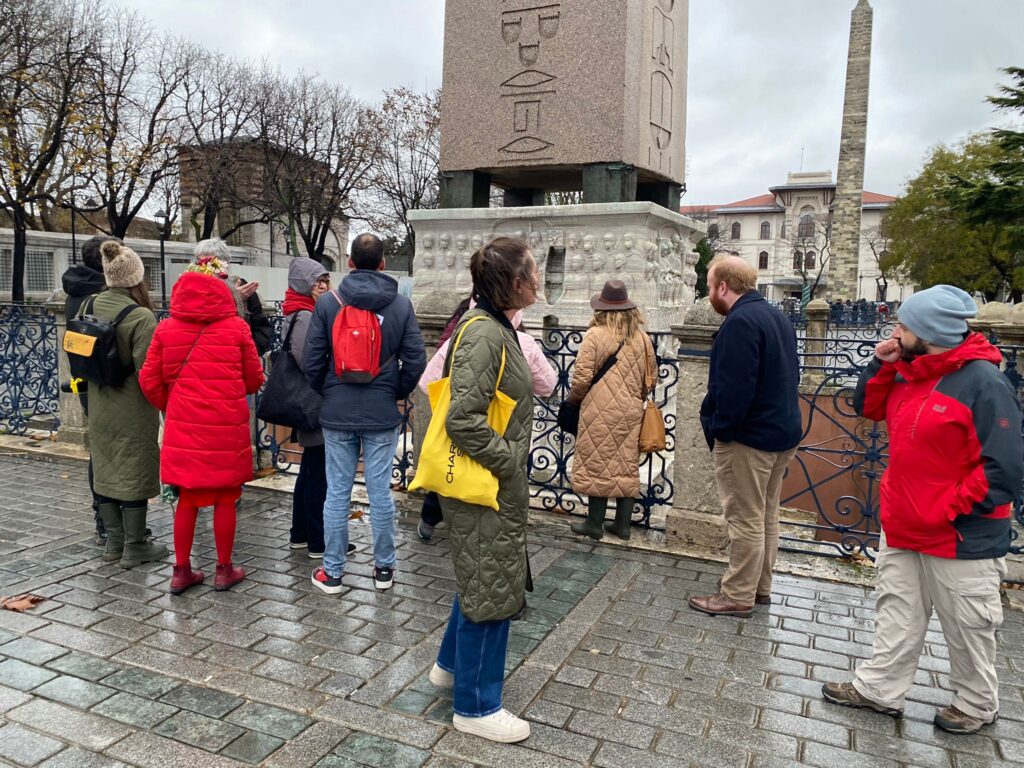
2. Peykhane Cd. No: 39, Late Antique palace bath, for which you have to enter a shop named Terzioğlu Halıcılık. This place is well-handled, and the staff is proud of the Byzantine remains. Note the late fifth-century brick stamps down there.
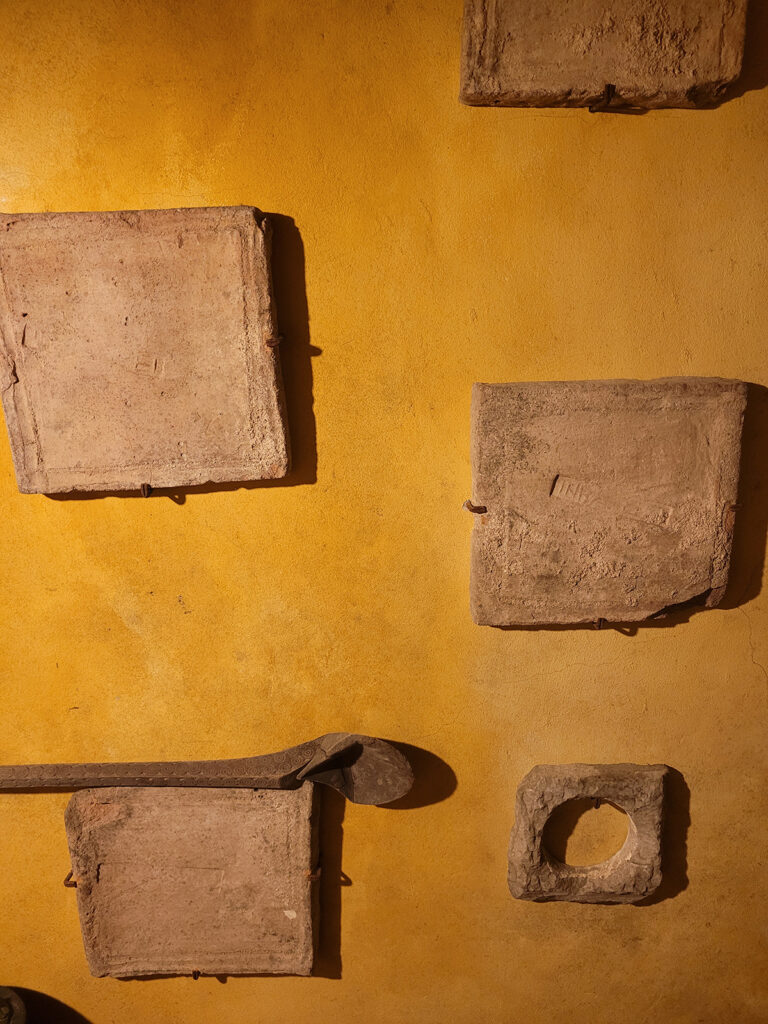
3. Around 11:00, the Columns shop, connected to the Mehmet Çetinkaya Gallery, Küçükayasofya Caddesi Tavukhane Sk. No: 5. The shop has two huge, erect Troas granite columns with bases from one of the outside porticoes of the Great Palace. The staff of this luxury shop wasn’t thrilled to accept us (they prefer paying customers), but we got a peek at their columns.
4. Around 11:30, Nakkaş Rugs has the Nakilbent Cistern with a Byzantium 1200 Hippodrome exhibition. It was a breeze. The exhibition has been dragged there from who knows where, looking a bit worse for wear with all the moisture from the cistern. Still, we got our group pic inside this fifth-century cistern—casual, right?
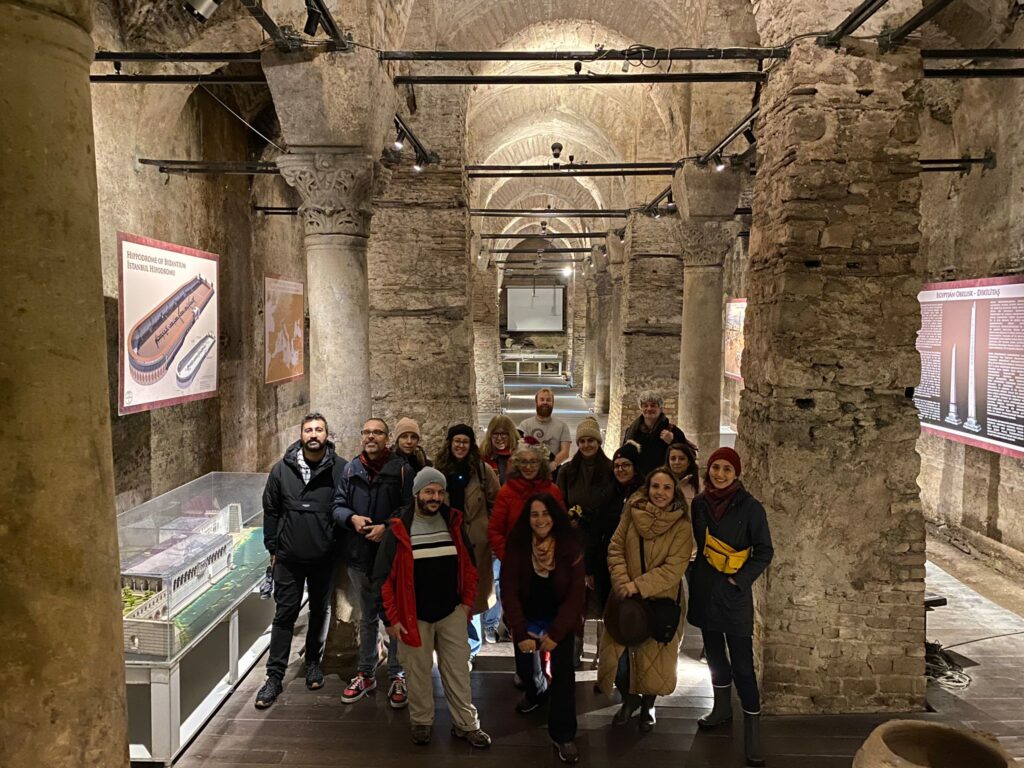
5. Around 12:00, Eresin Crown Hotel on Küçükayasofya Cd. There you find some artifacts in the lobby and bar, including a fifth-century mosaic, several columns and capitals of the same period, and Dokimean marble revetments. Note also the grave stelae of the Imperial period, indicating that this area was outside the city of Byzantion before 324, operating as a cemetery. They welcomed us with open arms at the hotel lobby, even whipped up a cool publication for us. Nice folks.

6. Around 12:20, Palatium Cafe, short lunch break there, followed by a visit of its substructures. This area is confusing but massive. The staff showed us around, even though the staircase felt like a slip ‘n slide. Some of us were scared of a clumsy fall. We then had the pleasure of seeing a large substructure of Middle Byzantine date. Some scholars connect it to the works of Theophilos, others to the Nea Church of Basil I. In fact, nobody knows what it once supported.
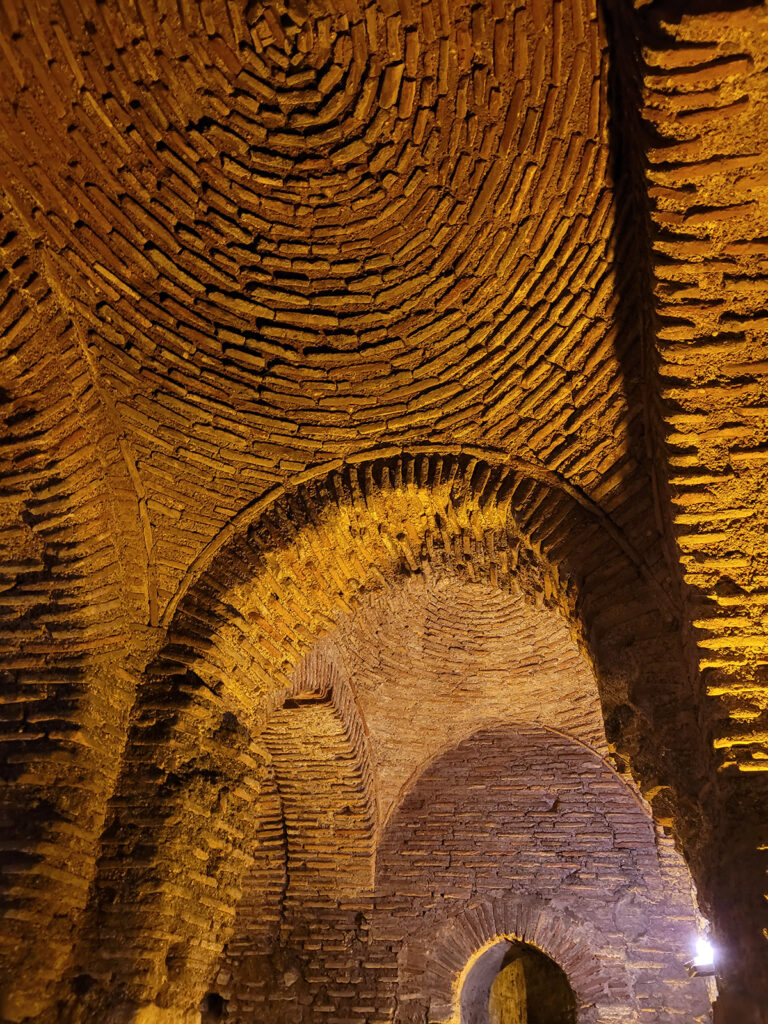
7. Around 14:00, Hodegon Suite, which has fragments of a fifth-century mosaic floor and a hagiasma with a Middle Byzantine fresco of the Theotokos. Spooky vibes, but we powered through. One should go there in the afternoon or make an appointment (like we did), as there is often only one person at the reception who is unable to leave the desk. Obviously, the owners consider this to be sitting on the Hodegon Monastery, but this remains to be proved.
8. Around 14:20, view from the terrace of Sultan’s Restaurant and a look at the so-called Ramp House, including the structure called Mamboury D.a. It connected the upper and the lower terraces of the Palace.
9. Around 14:40, a view from the terrace of the Seven Hills Restaurant is an option. Because of the rain, we skipped that part. We regrouped and returned to the tram station and parted ways, some of us kicked back with a café in Karaköy.
Rain or shine, we conquered Sultanahmet!
A Byzantine tour across Balat and Ayvansaray
The rationale of the tour
We wanted to get to where the vibes of the ancient mix with the hum of today! So, you know Istanbul has a rep for its grand mosques, right? Yet there’s a bunch of nice churches sprinkled around, too! They are like hidden treasure chests full of ancient goodies. Think of spolia and Byzantine remains, way more than you’d typically find in mosques. But here’s the kicker: they’re like those secret clubhouses you needed a password to get into. So, we got wind of a priest, Father Ilia, who runs the parish church of St. George at Edirnekapı. We thought, “Why not pay him a visit?” Now, Edirnekapı has history. The Byzantines called it the Gate of John the Baptist. The spot used to be all buzzing with places like ta Charsiou and the neighborhood of Petra back in the day. We were 7 people.
Itinerary
1. The church of St. George with the ayiasma of St. Basil. Stepping into the church, Father Ilia gave us the warmest welcome. We geeked out over ancient icons, some dating all the way back to 1726! This church used to flex with three altars, but its apse? Tiny. The church is Greek by origin but now run by the Georgian community in Istanbul. Chatting with Father Ilia, we got to understand the challenges of the Georgian community and its current size and situation. Finally, we sipped on some tea and nibbled on sweets in his office. And let me tell you, that place is a gold mine spolia-wise, mostly from the Late Antique era.
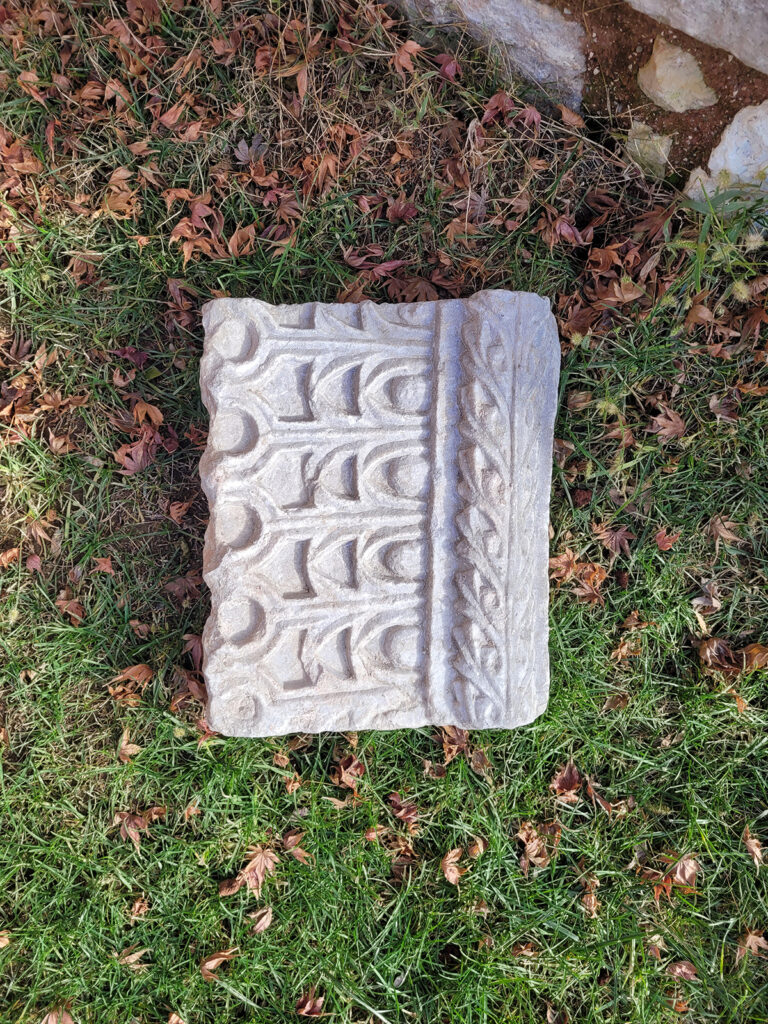
Oh, and you know you cannot leave without the obligatory group pic, right?

2. Kariye Camii (from outside, still under restoration).
3. Kefeli Camii.
4. Remains of the Bogdan Sarayı chapel. Now located in a park. Its history in the Ottoman period is truly fascinating. Some parts of it ended up in Surrey.
5. Church of the Archangel Michael (Aya Taksiarhi) in Balat, with the ayiasma of St. Nicholas. We tried to sneak a peek, but the doorkeeper was playing tough! Still, got a glimpse of their garden—pretty, but not much spolia action.
6. Surp Hireşdagabet church with the ayiasma of St. Artemios. Imagine a Byzantine ayiasma in a crypt, kind of like that other one we visited the other day at the Hodegon Suite. This place is like a historical jackpot—they’ve got St. Artemios’ bones and his Late Antique marble slab that’s made the rounds in publications. And the church gate is a masterpiece from the eighteenth century, complete with German and Latin inscriptions.
7. St. Dimitrios in Balat. Meh, not the grandest. But they’ve got some spolia in their garden. And there’s this debate about whether the Theodosian Land Walls crossed paths with it. So, we left scratching our heads, but hey, that’s the fun part of scholarship.
8. Atikmustafapaşa Camii (from outside, under restoration).
9. Substructures of the grand Blachernai Palace. Imagine waking up to views that once mesmerized emperors! We even joked about buying a house there. But, real talk, the neighborhood vibes weren’t all that.
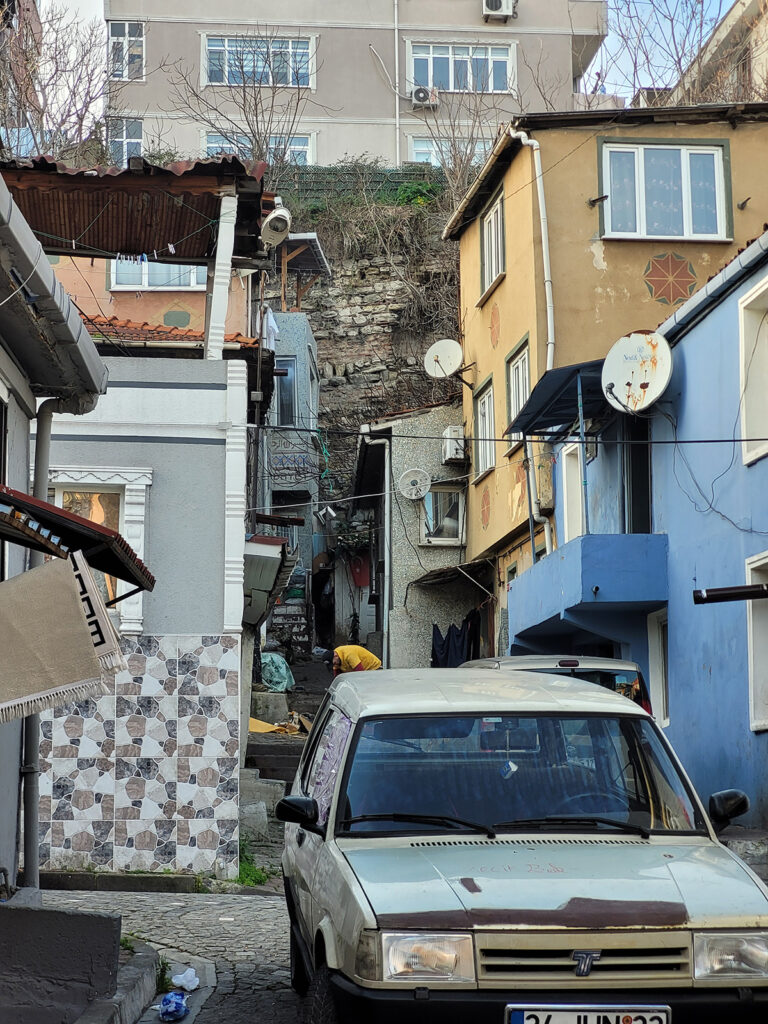
So, we wrapped up the day, promising ourselves a check of Fener next time. Yet, the post should stop here. Istanbul is definitely much more fun to discover in a group.

